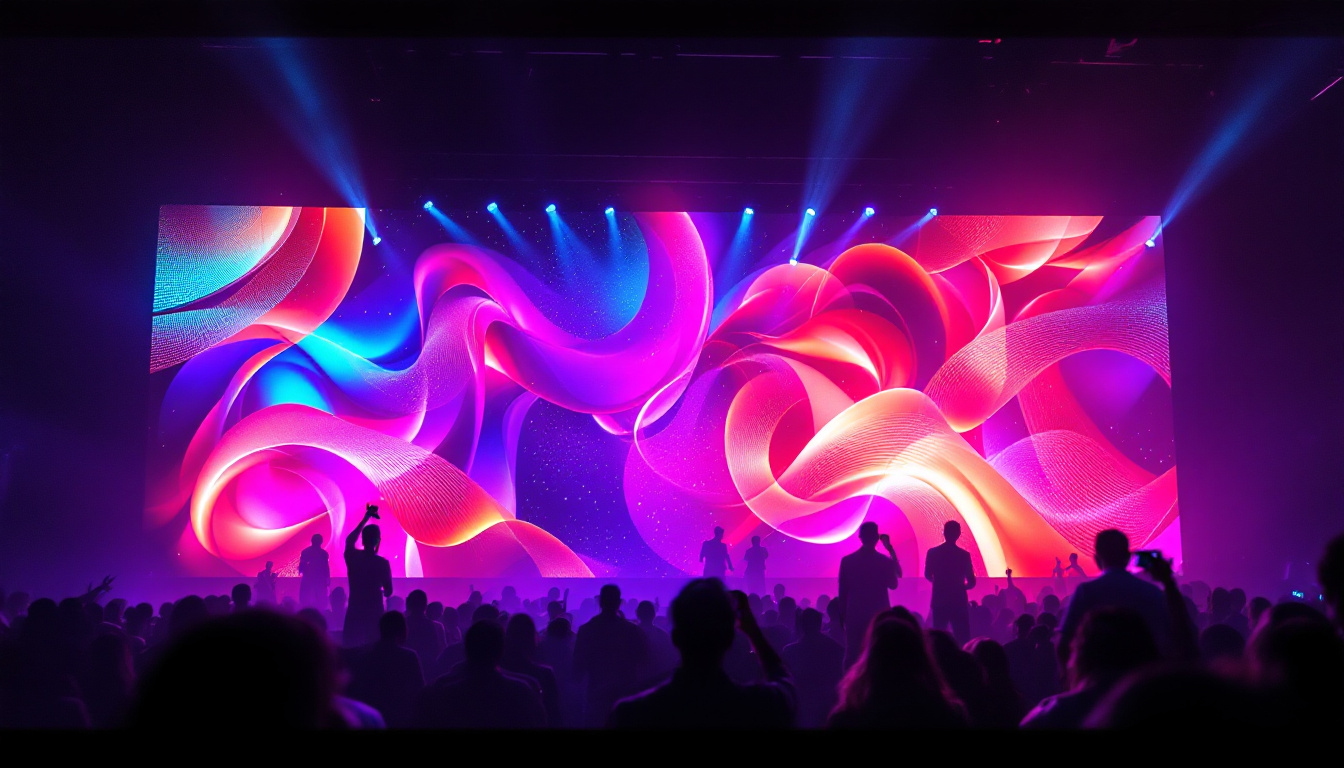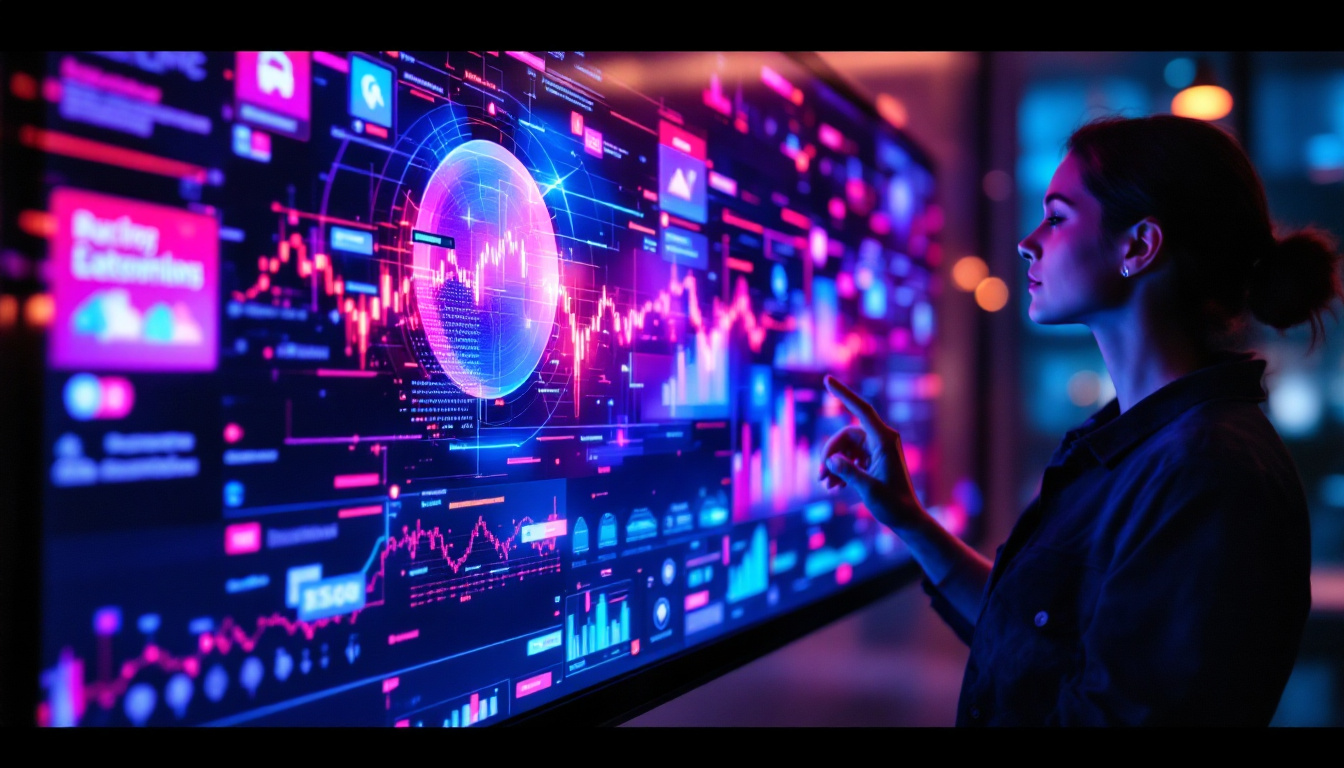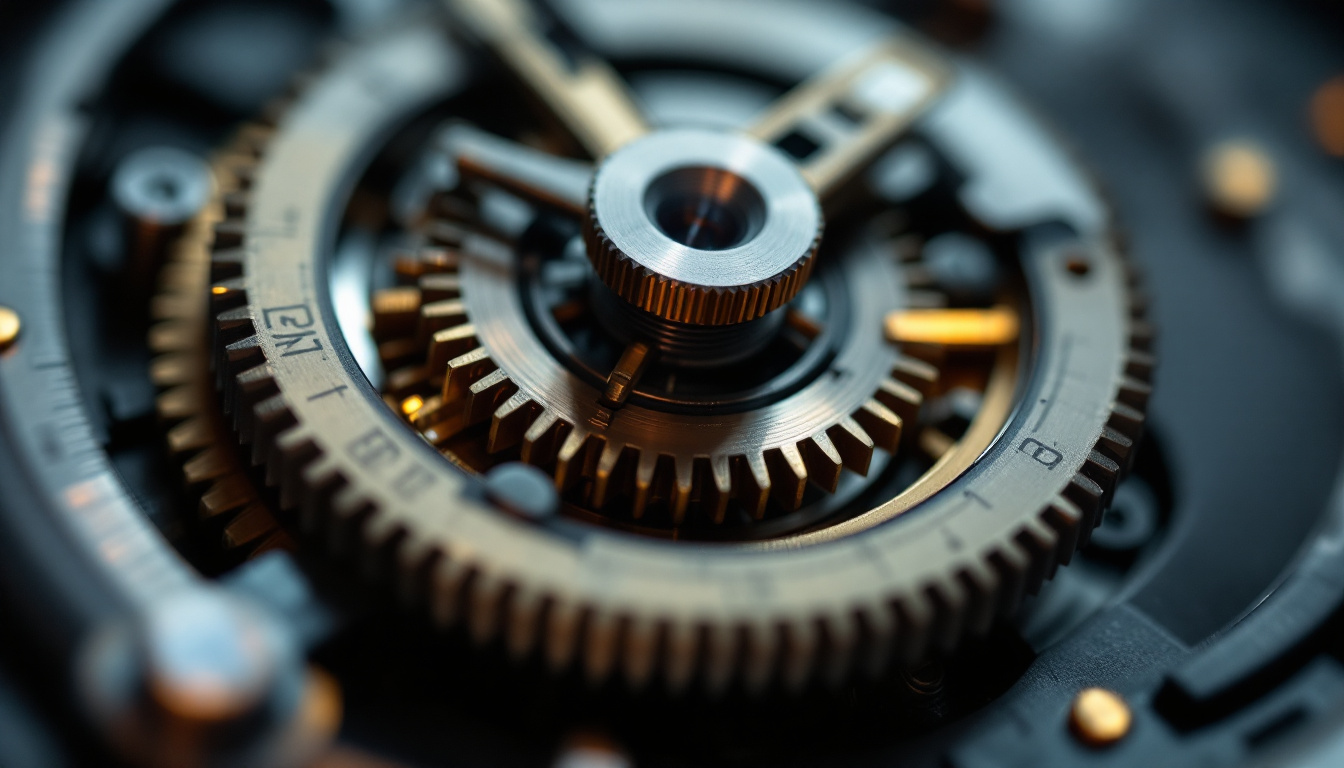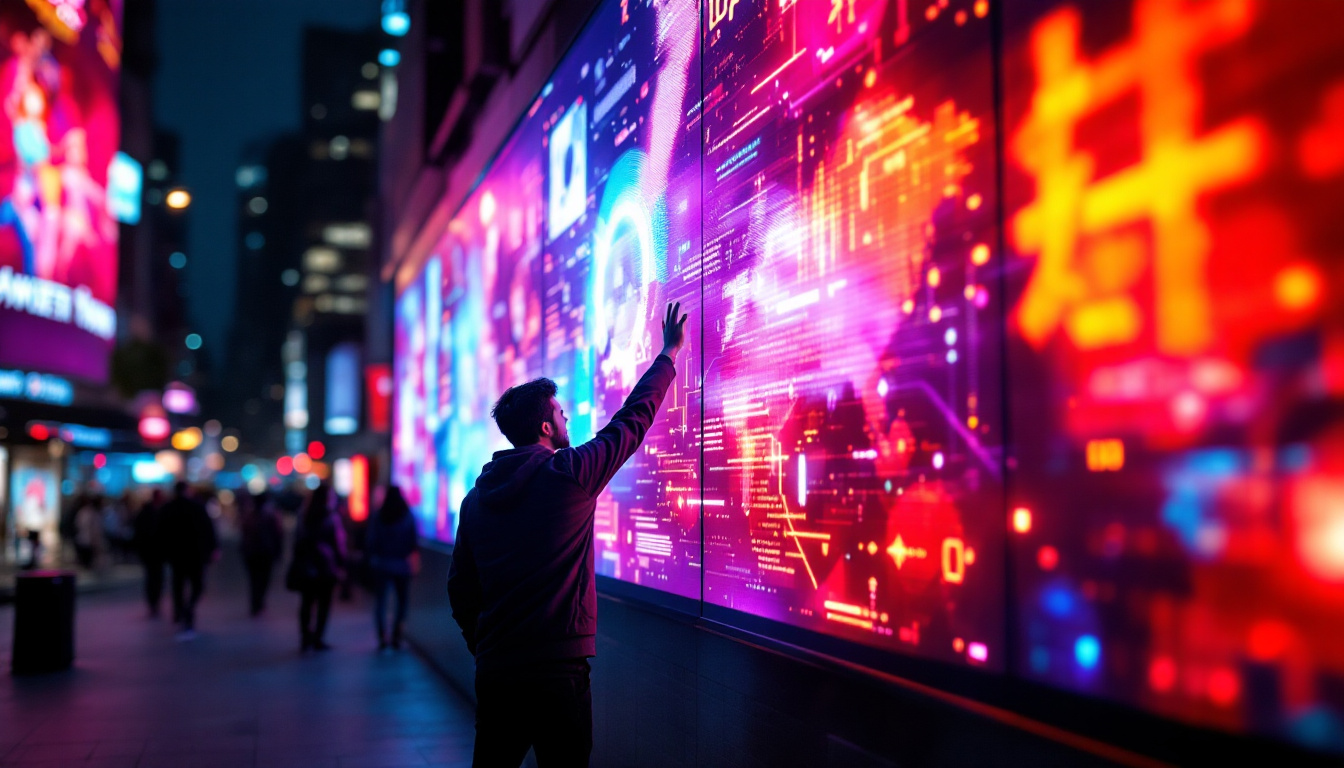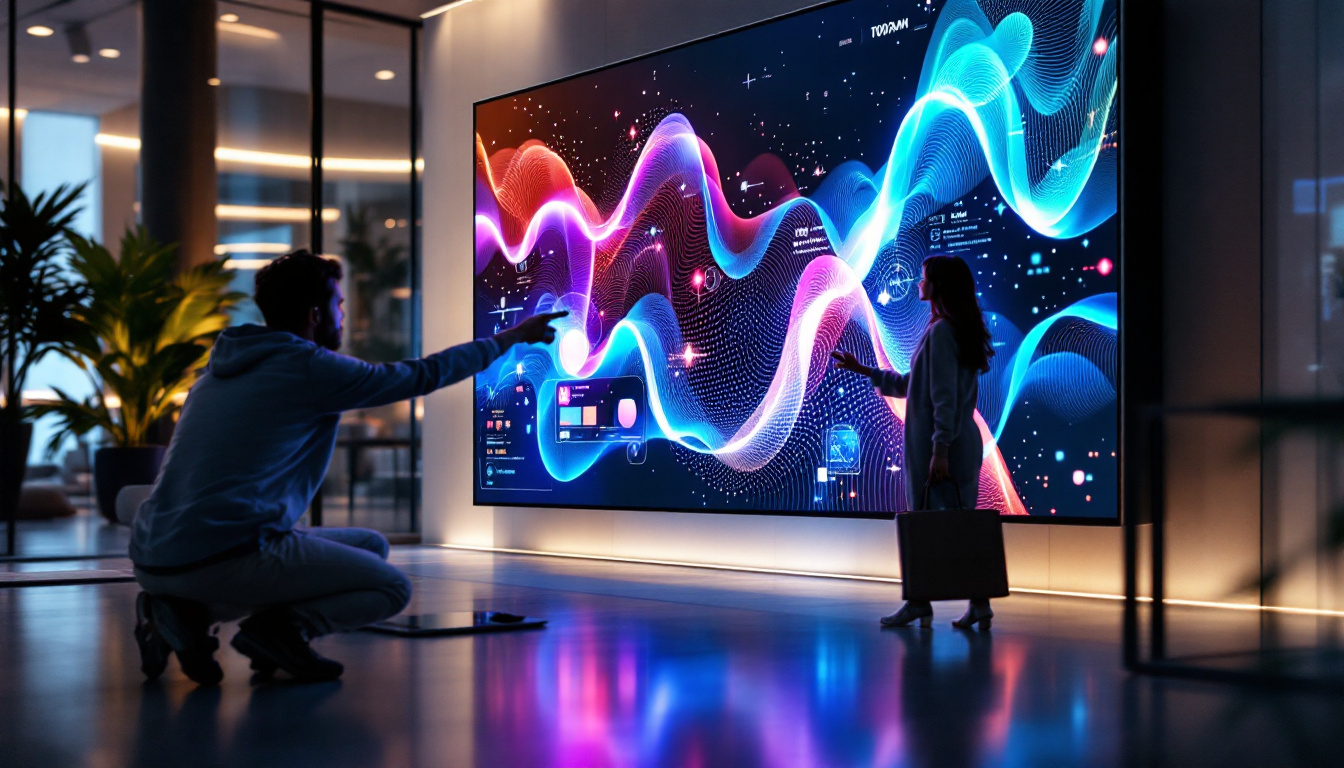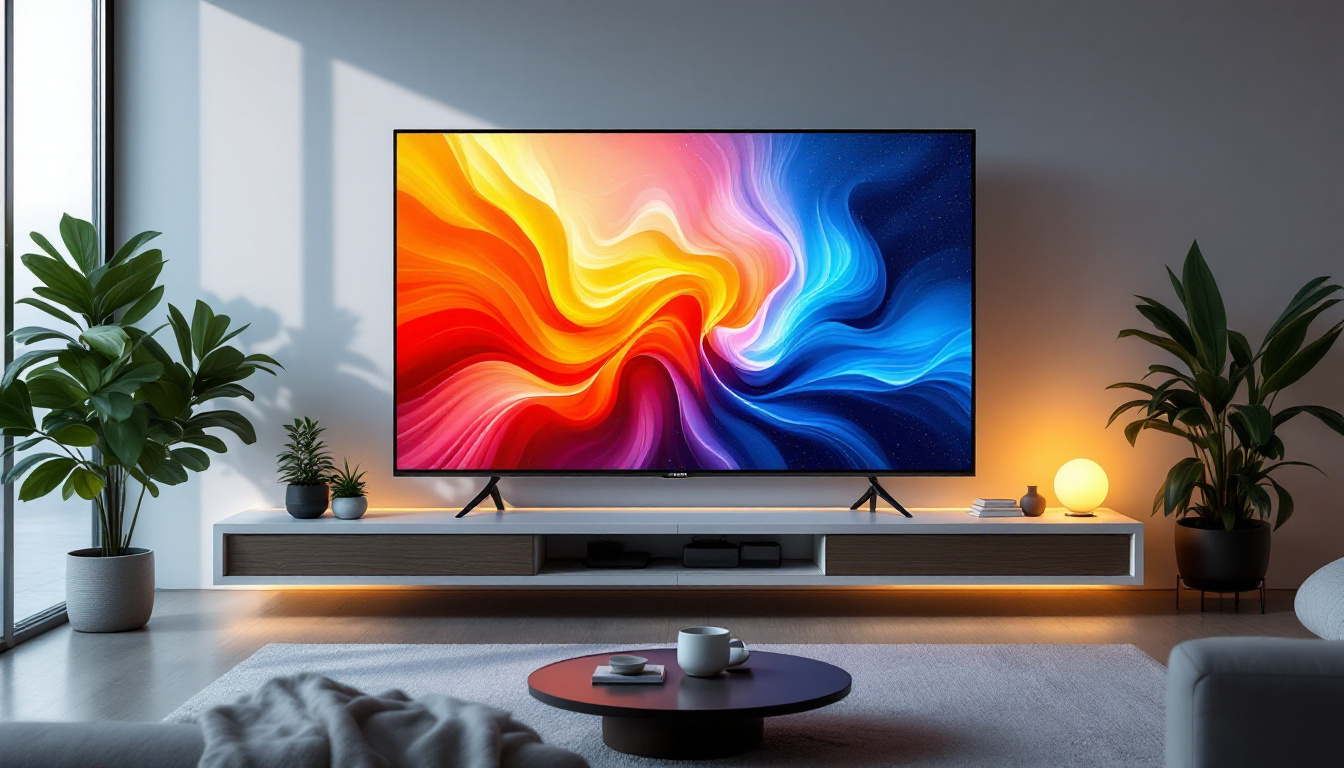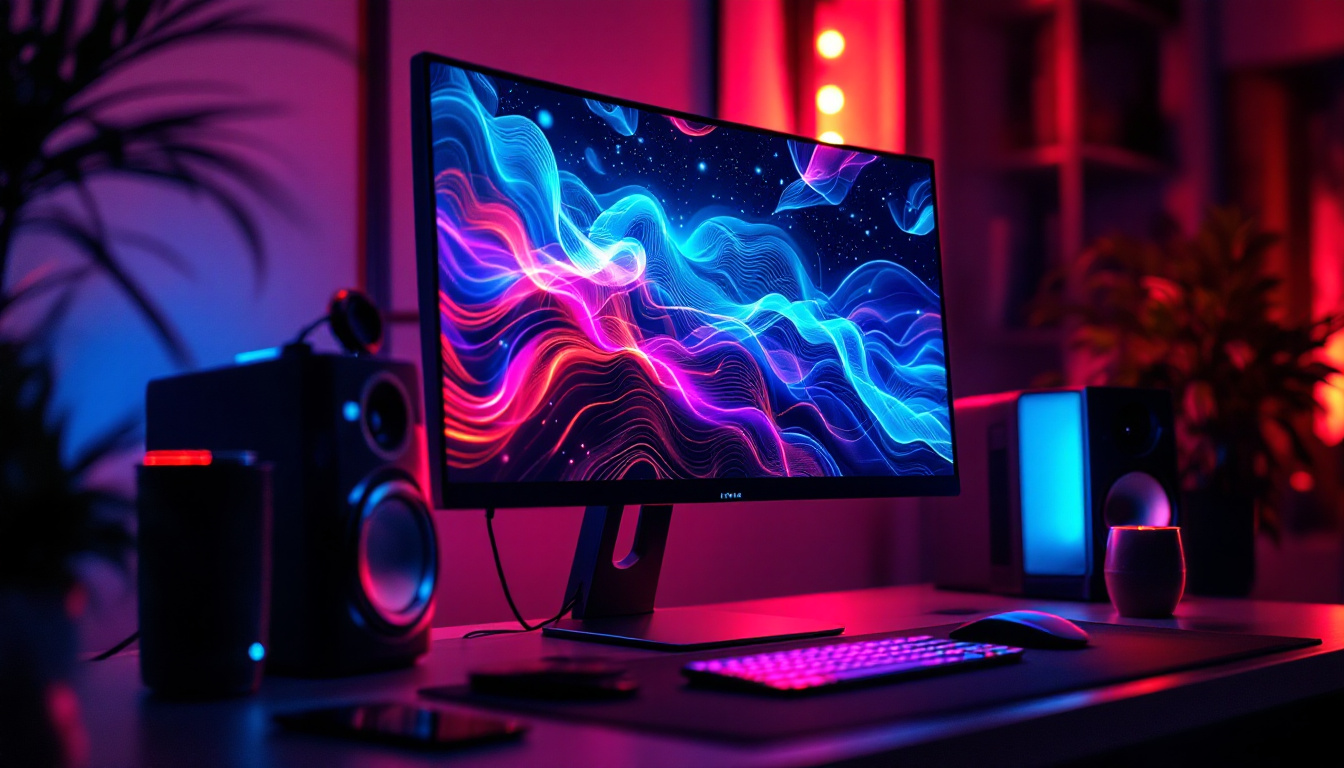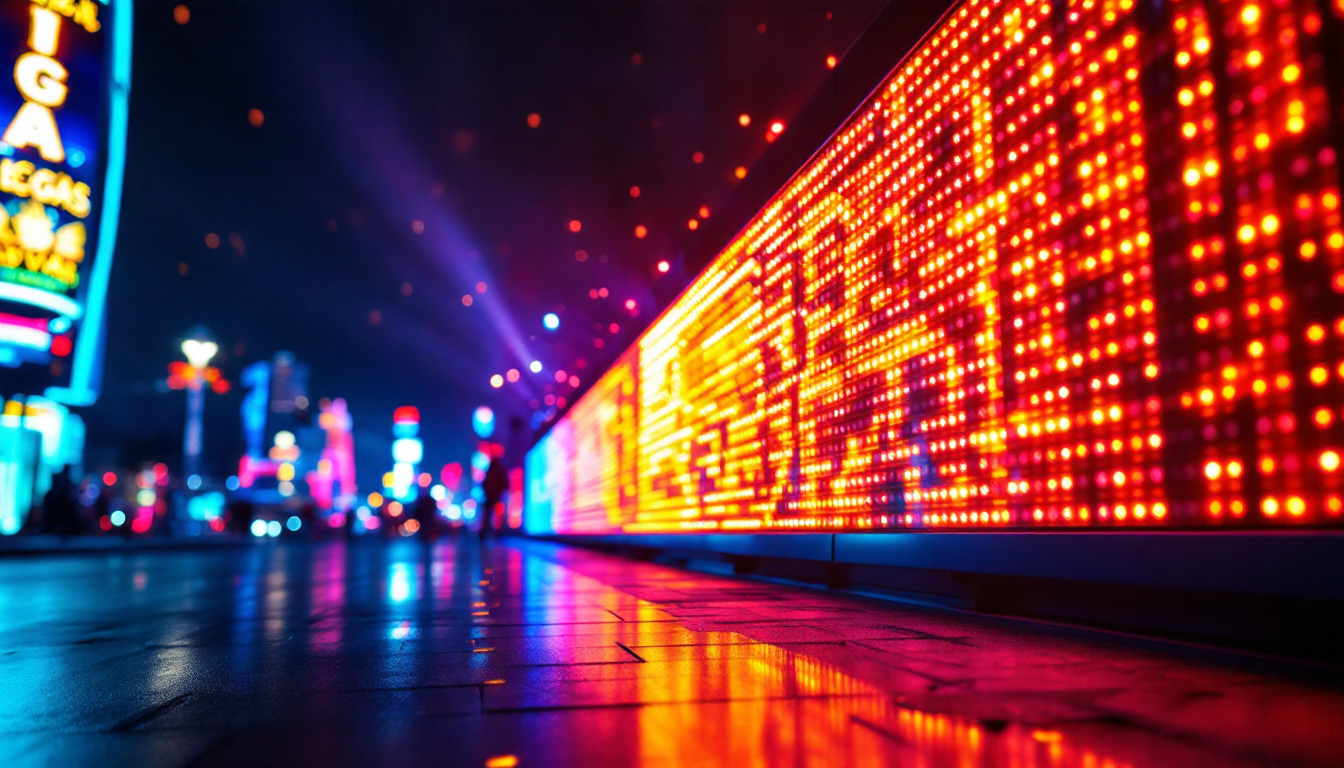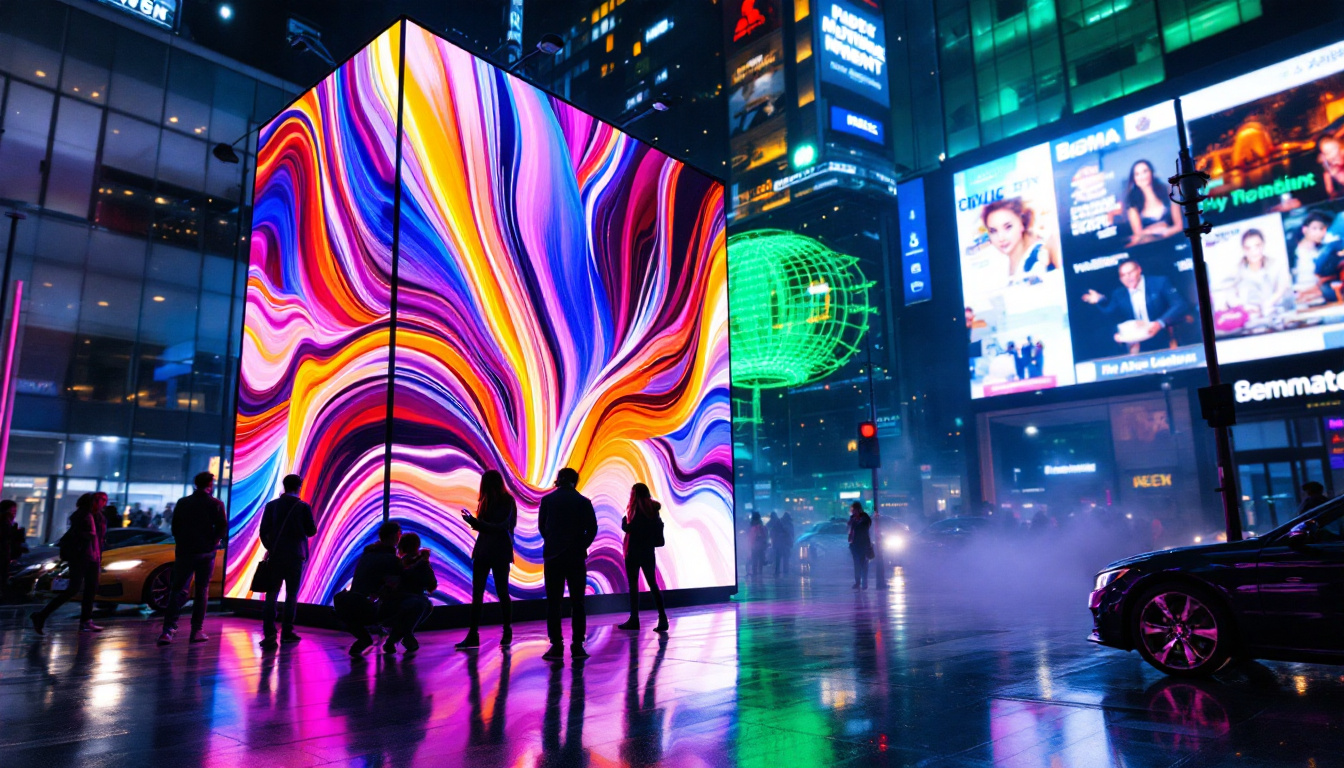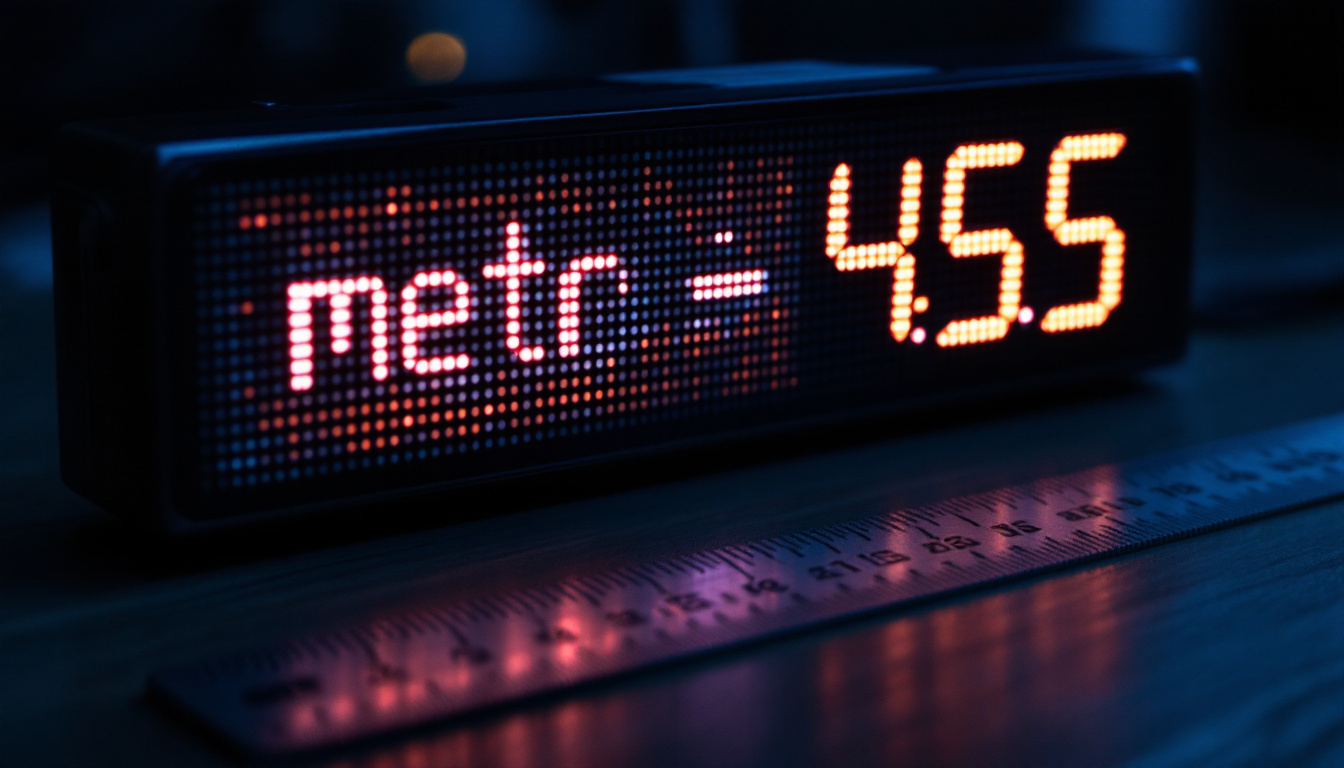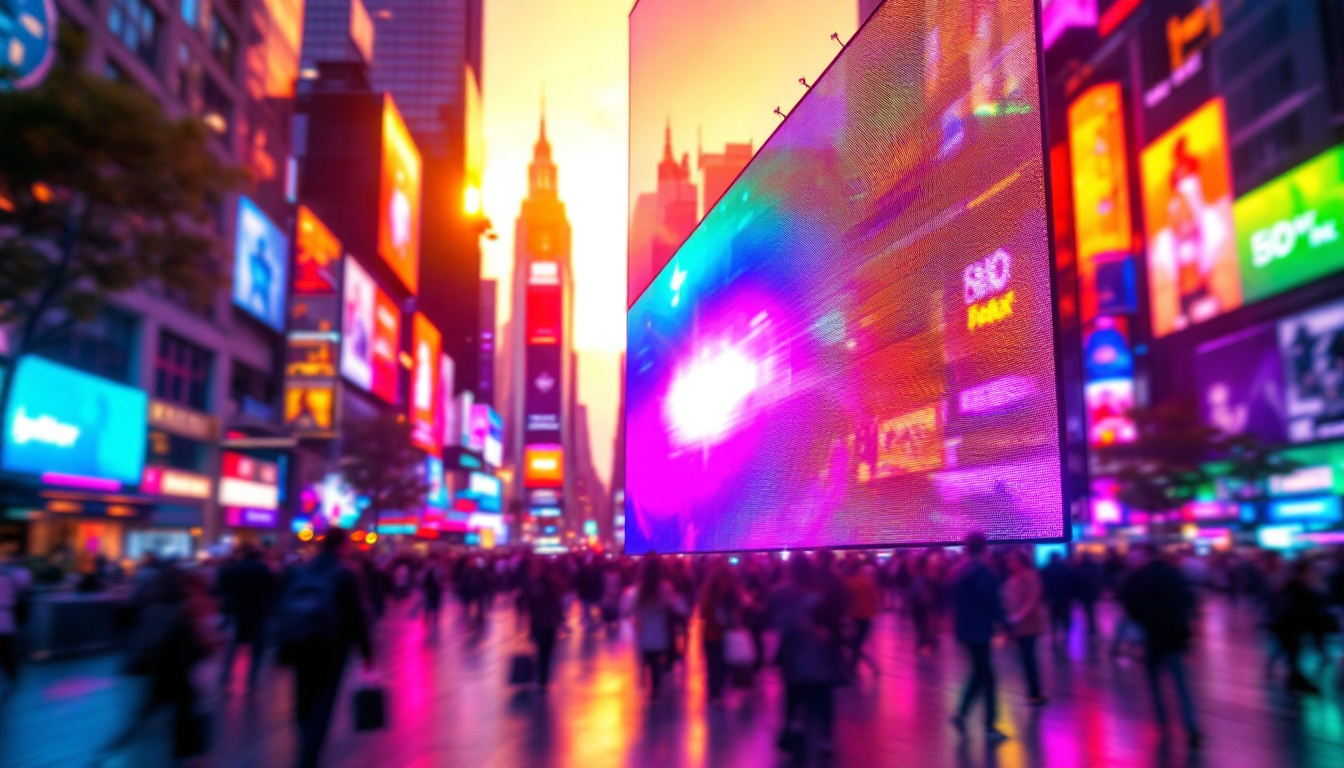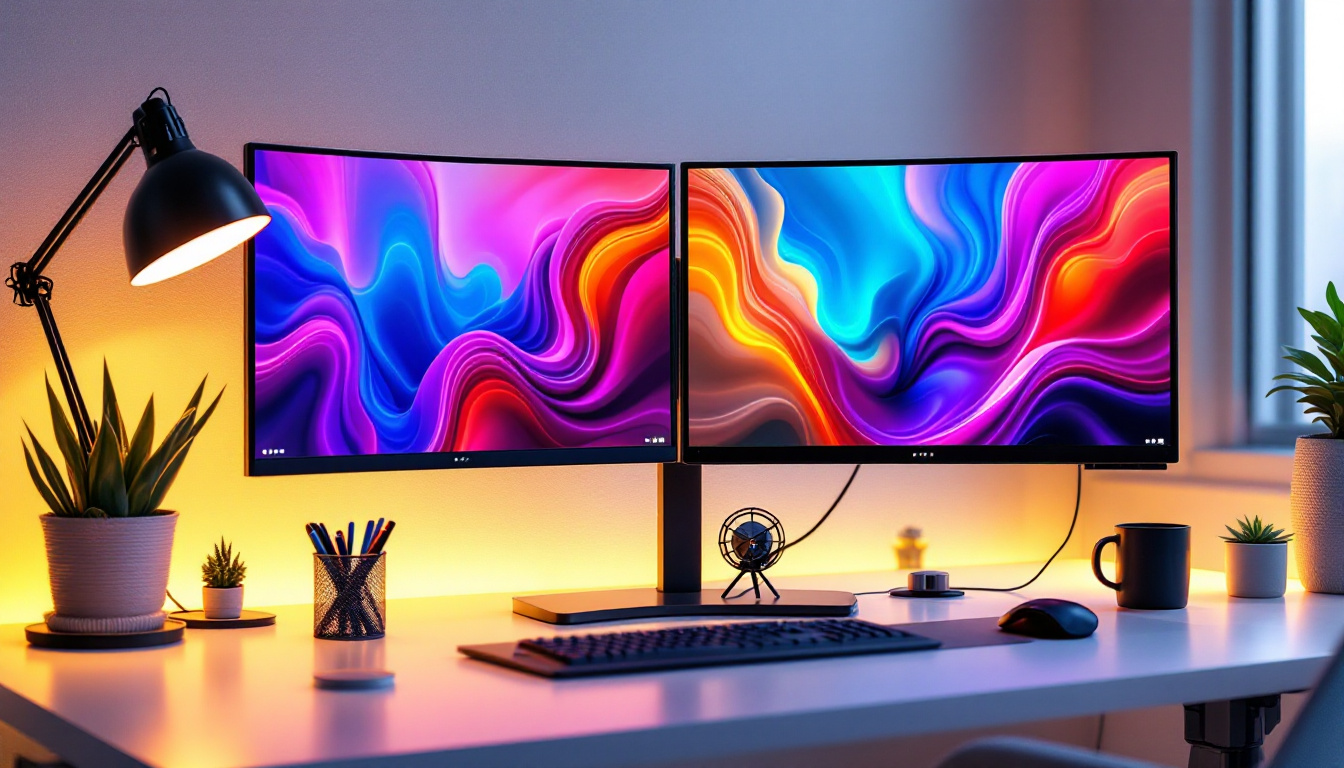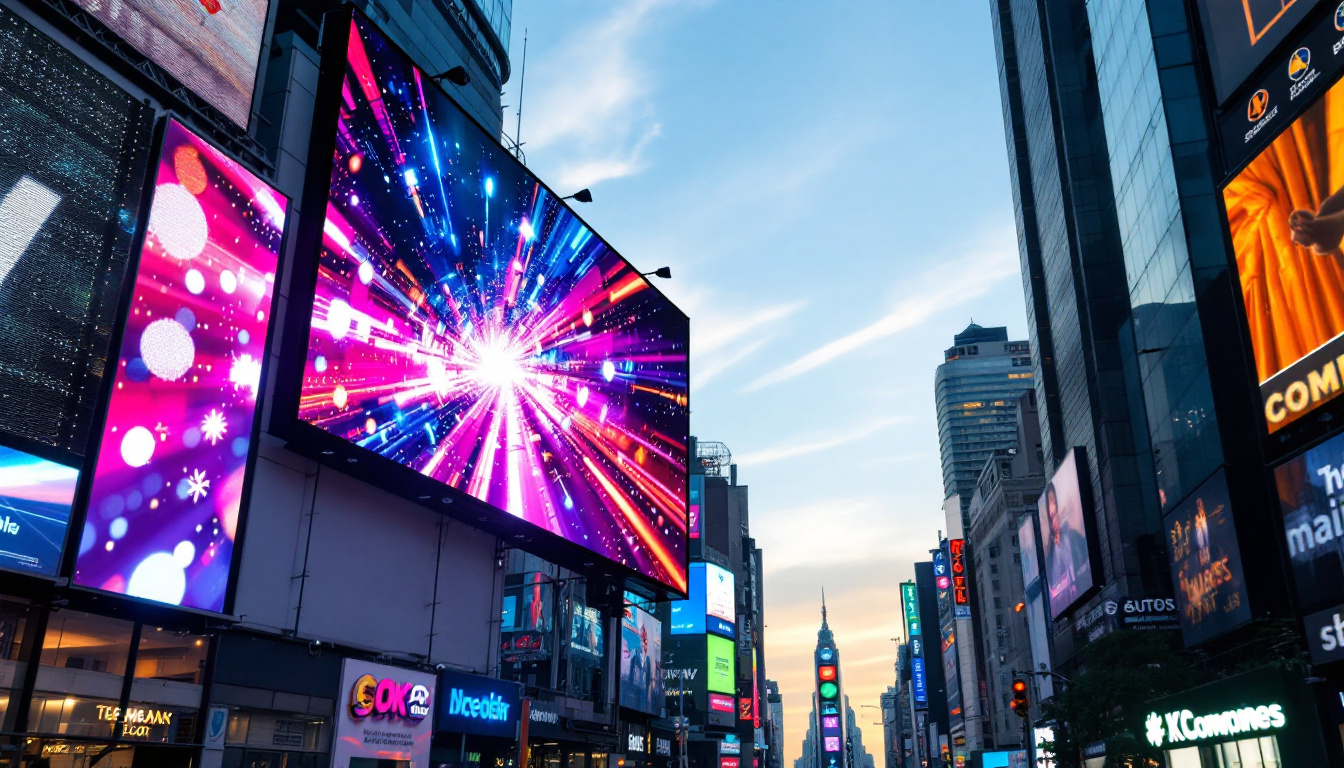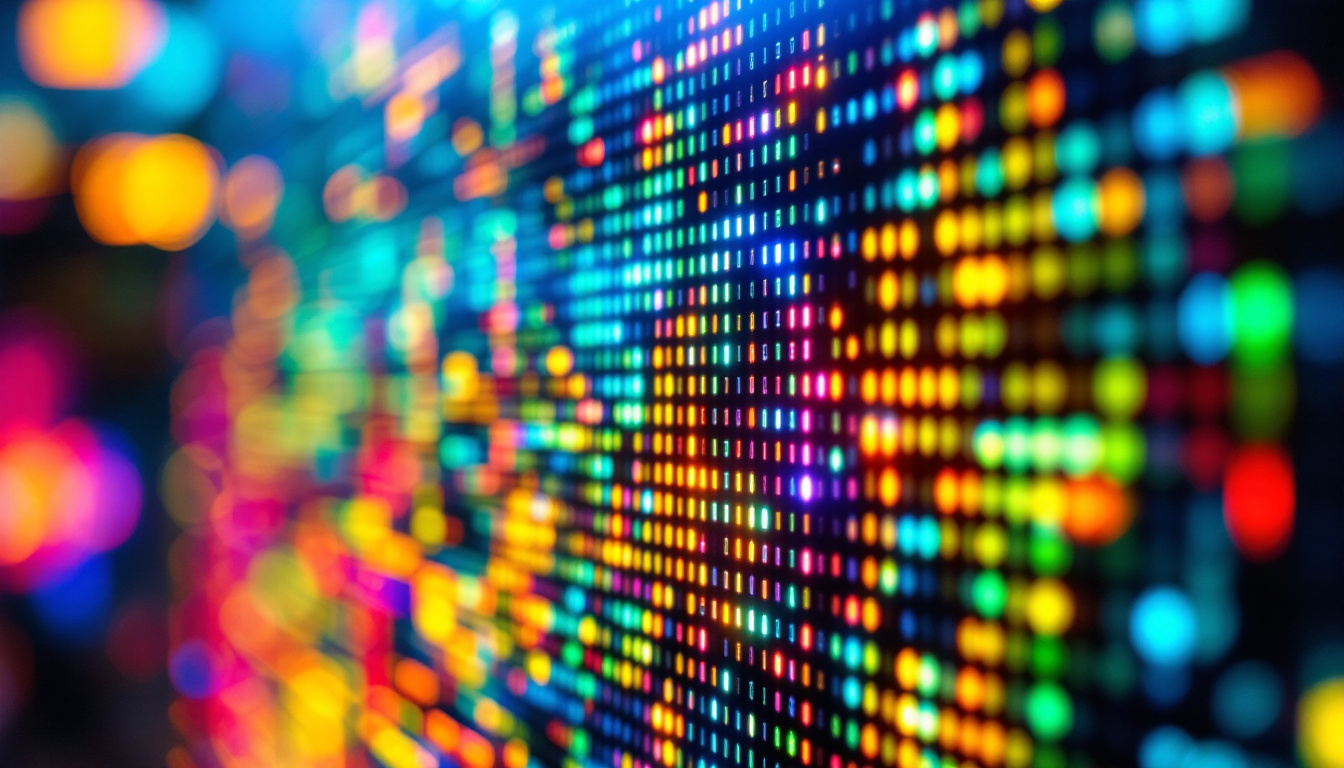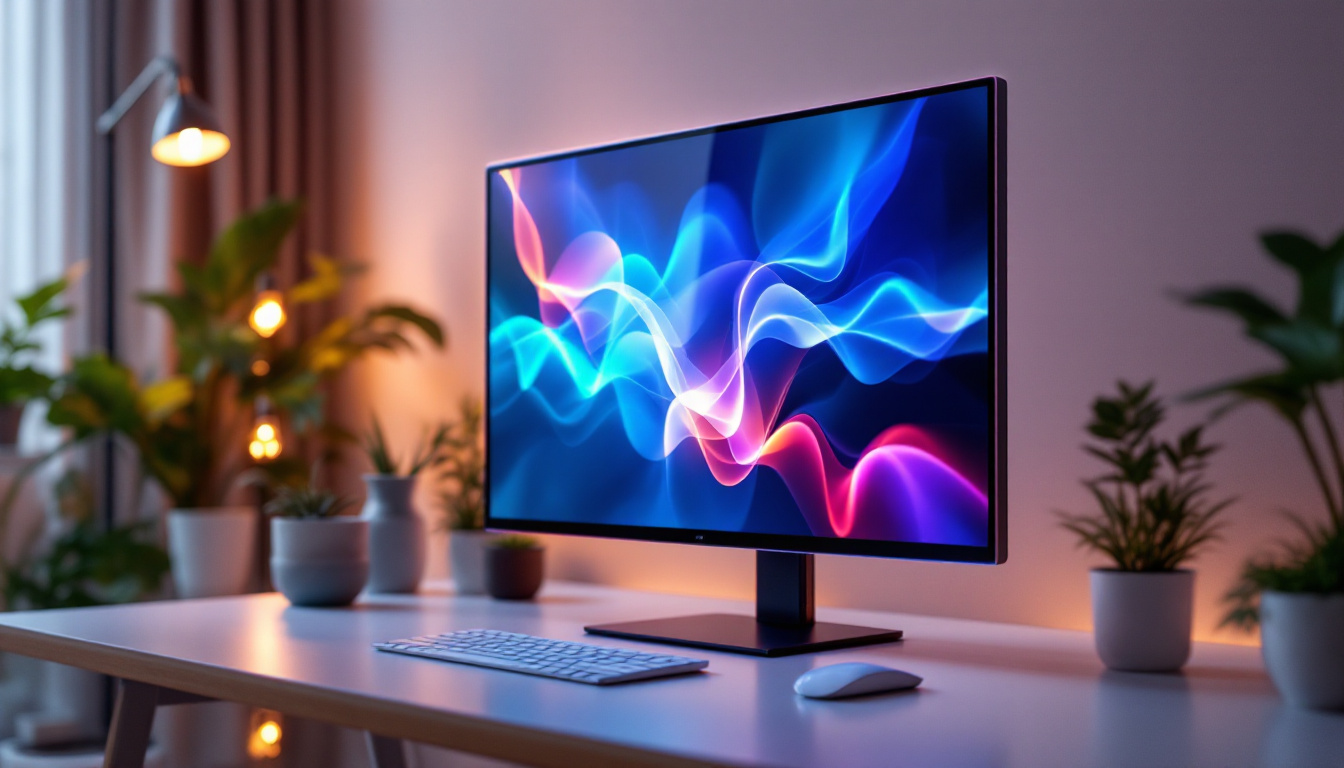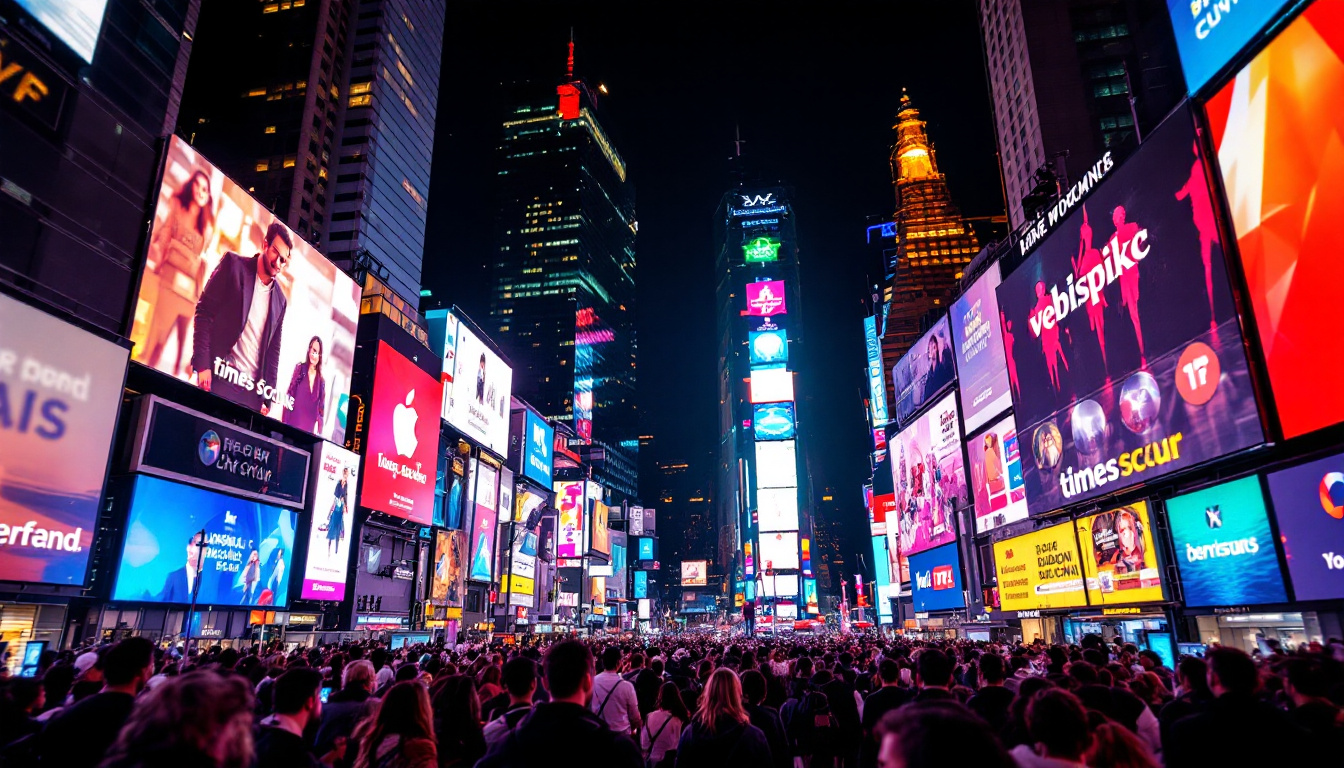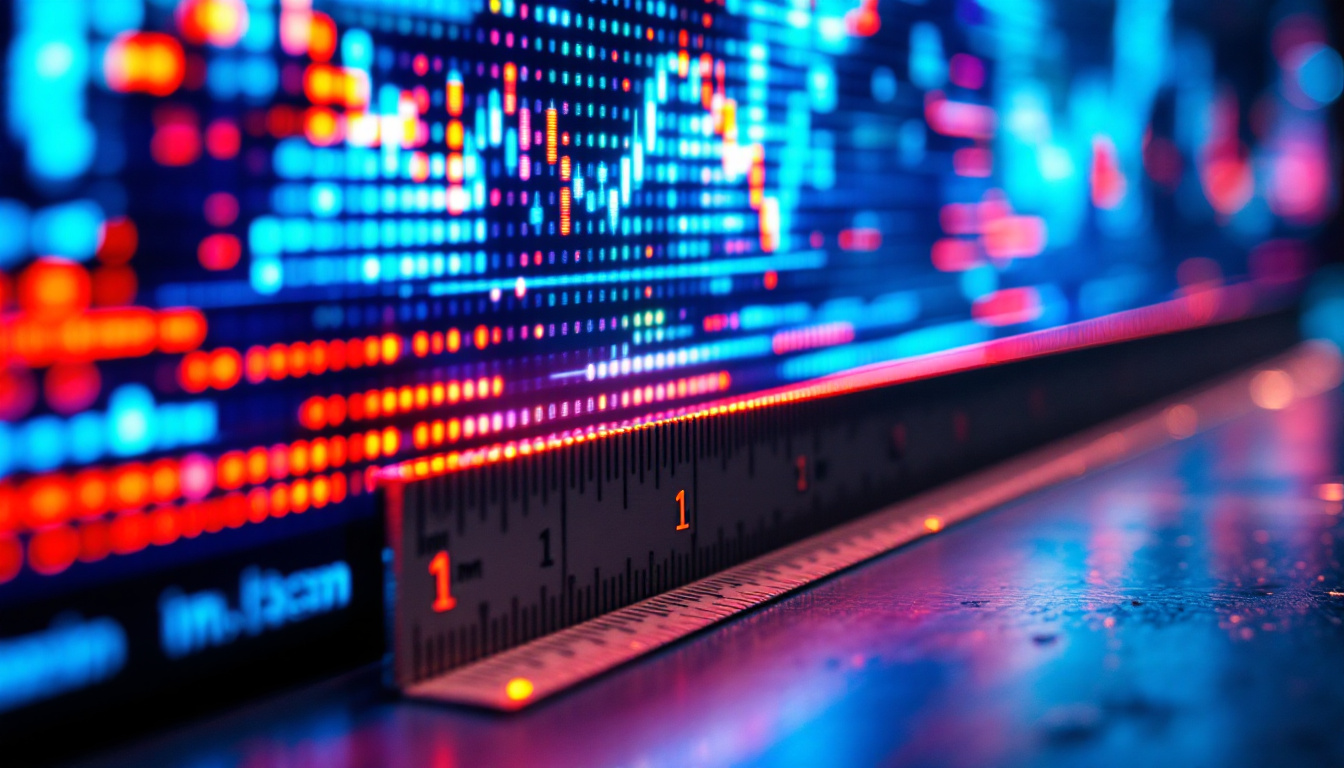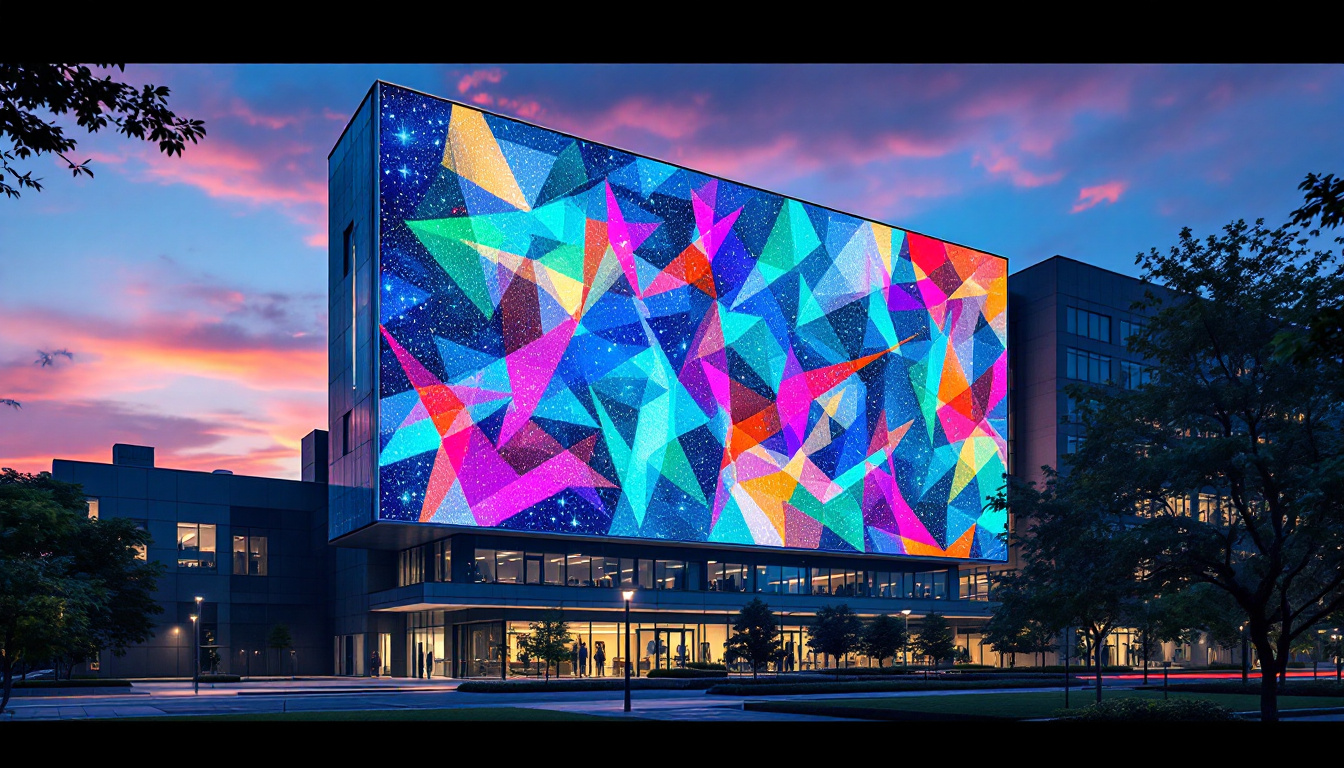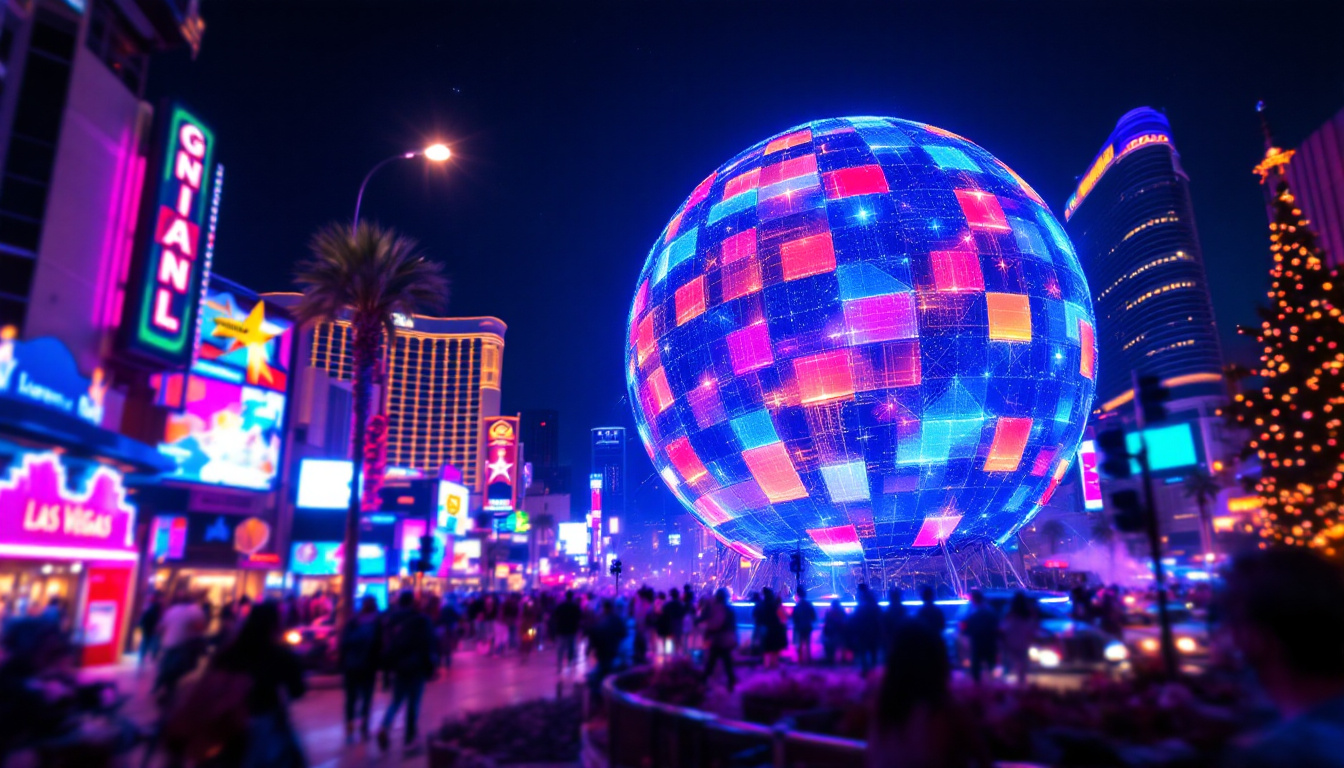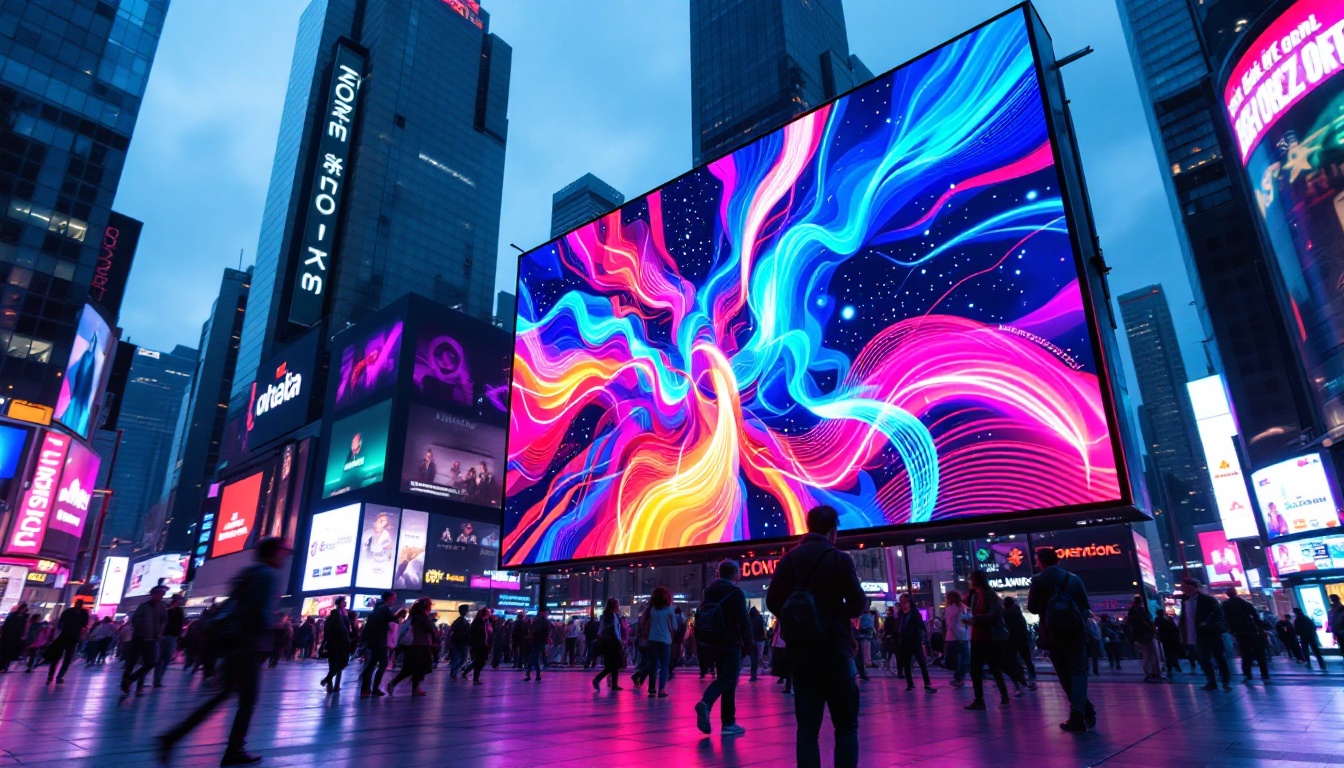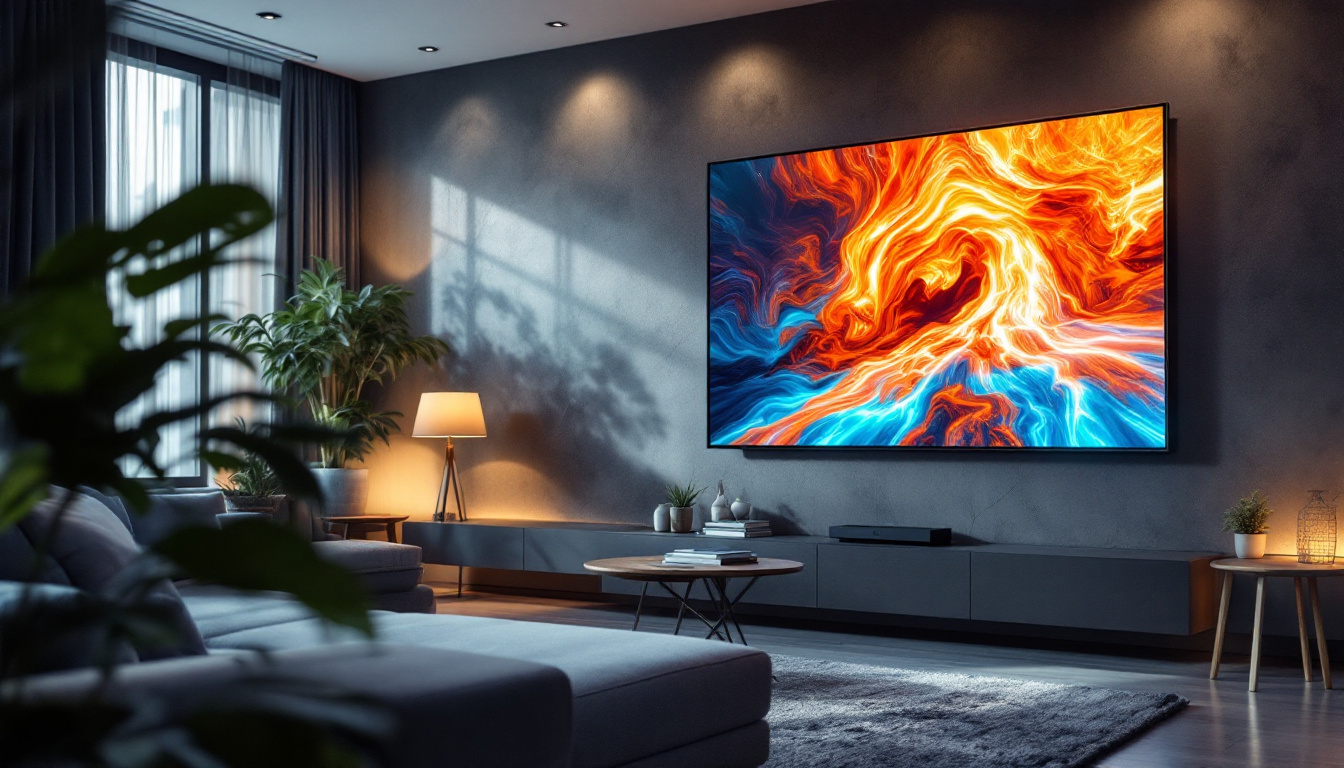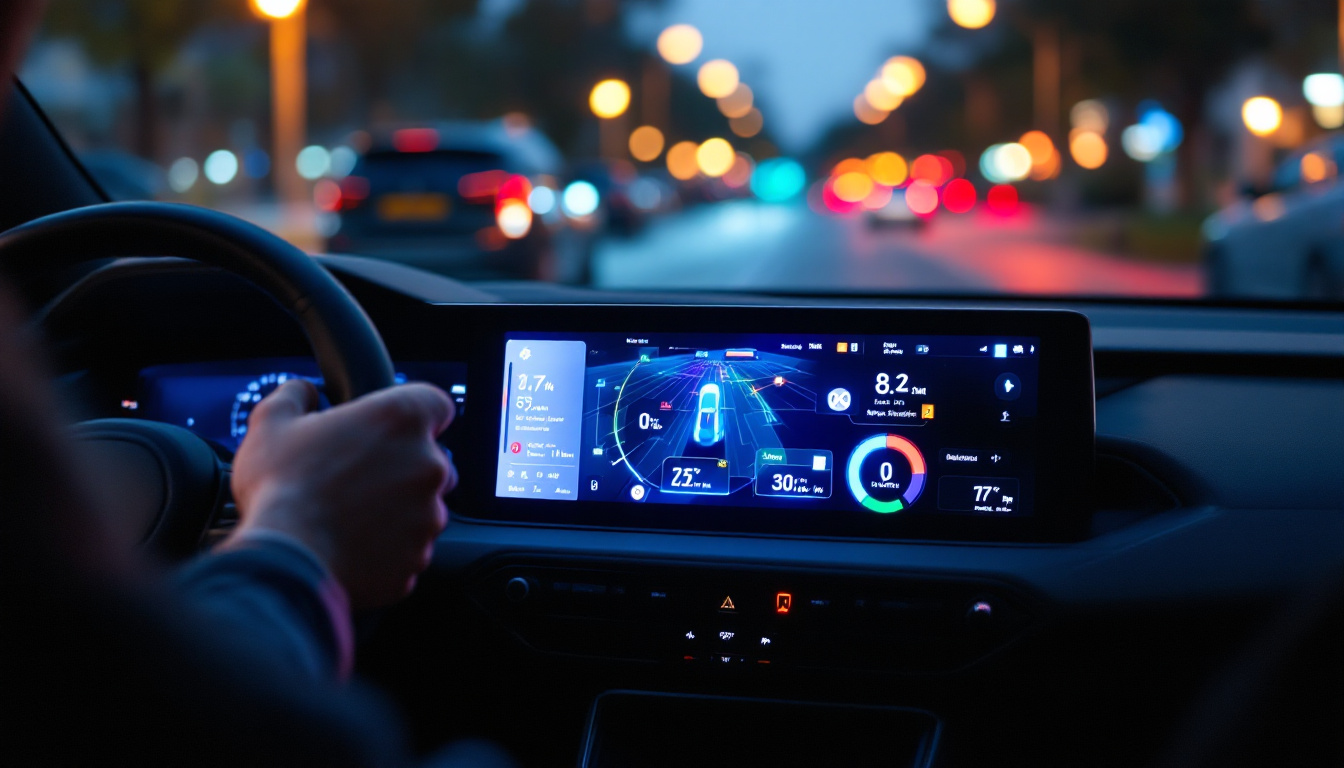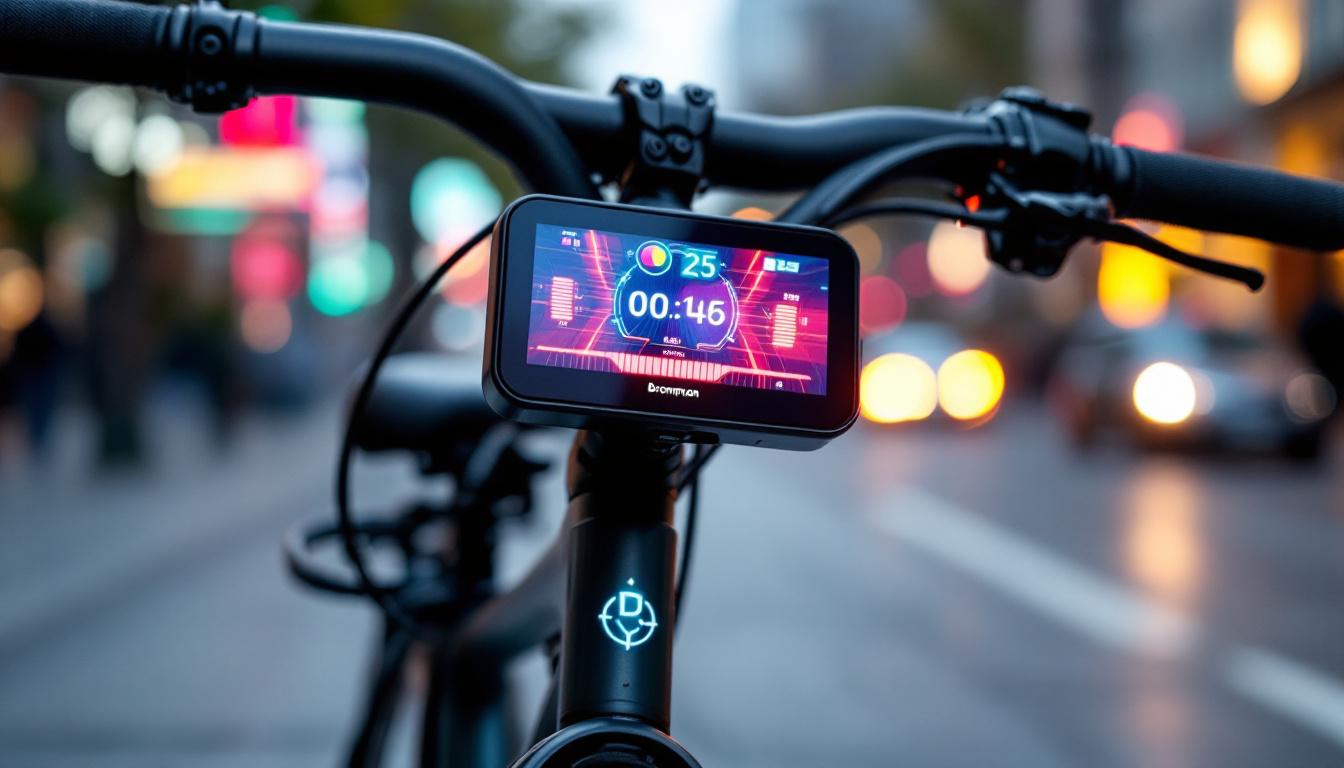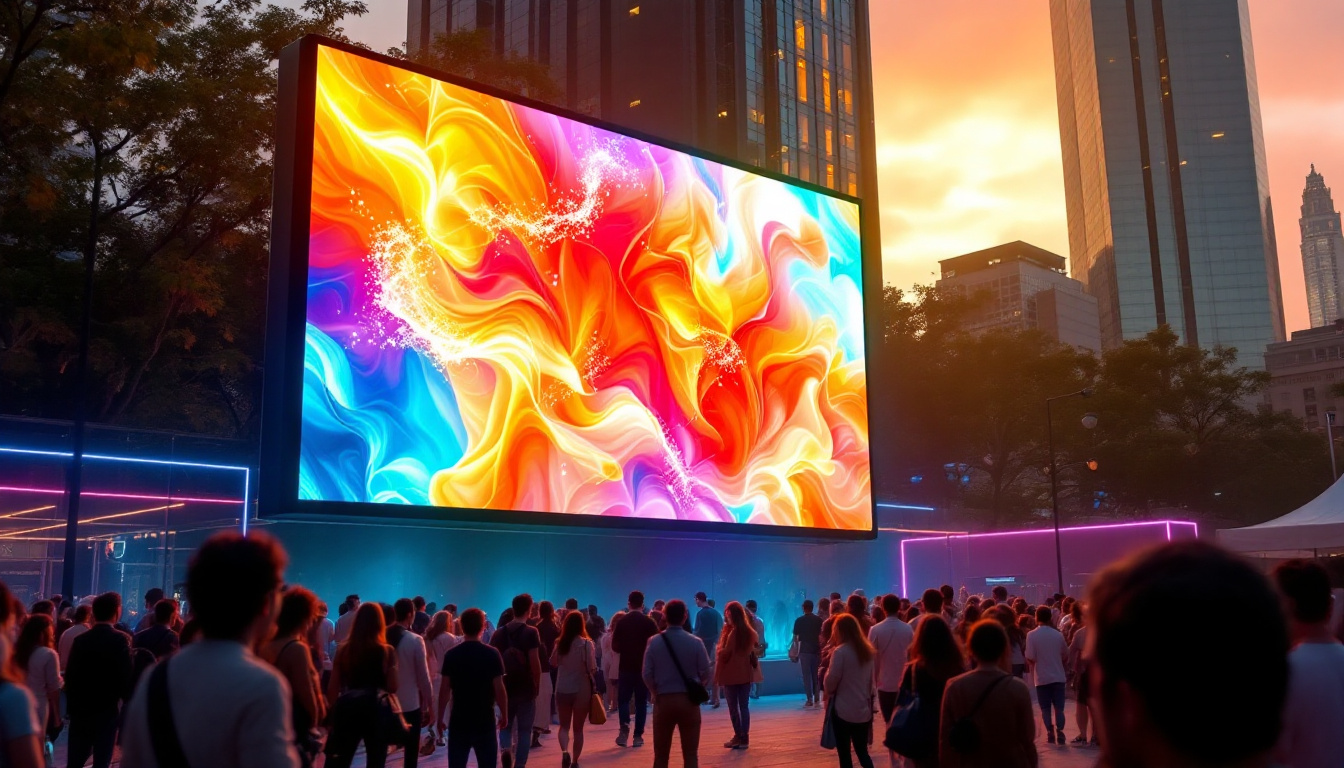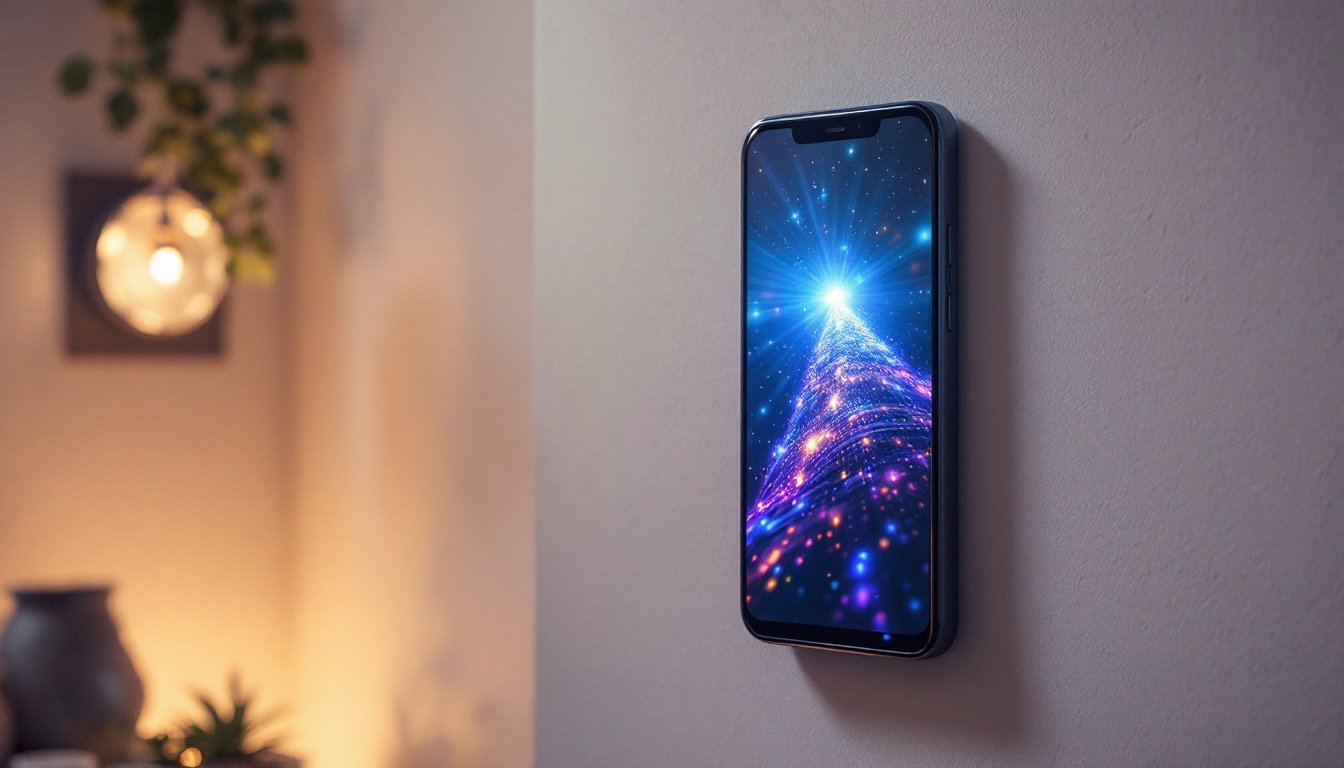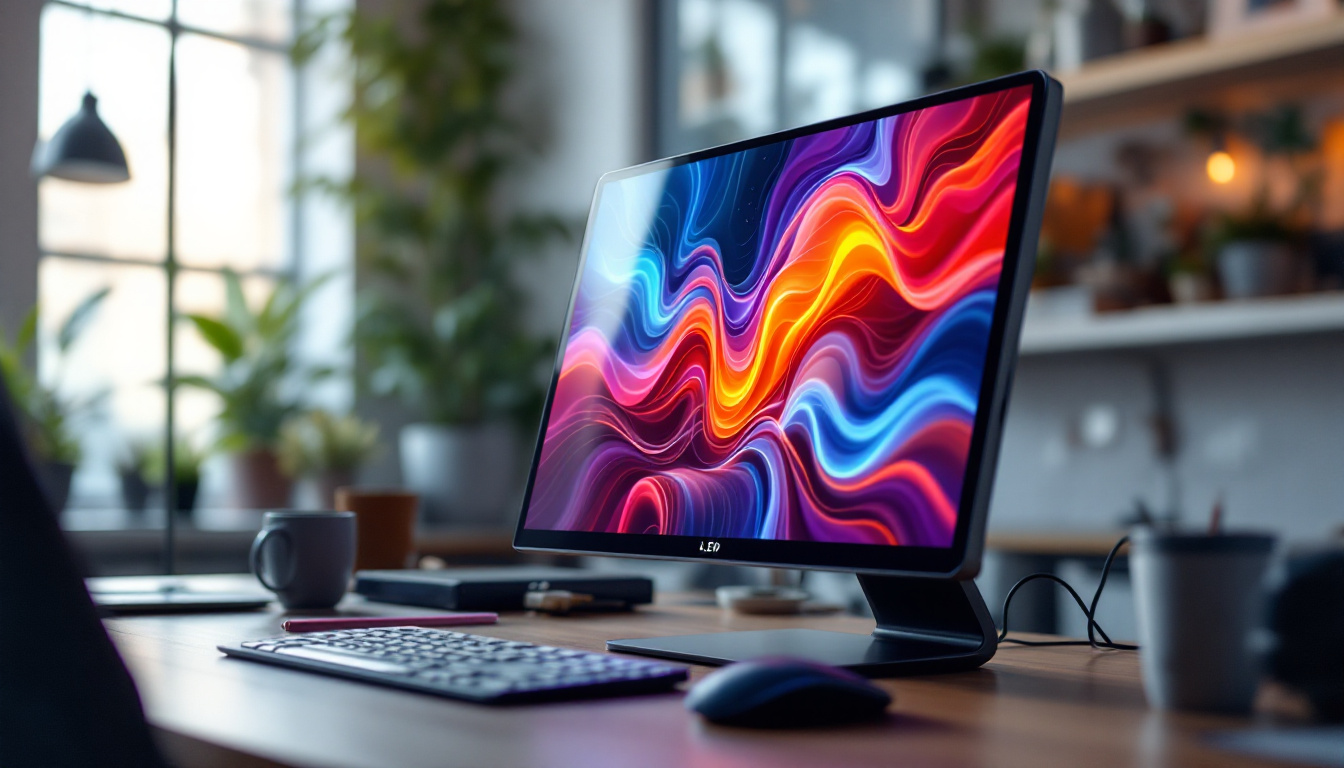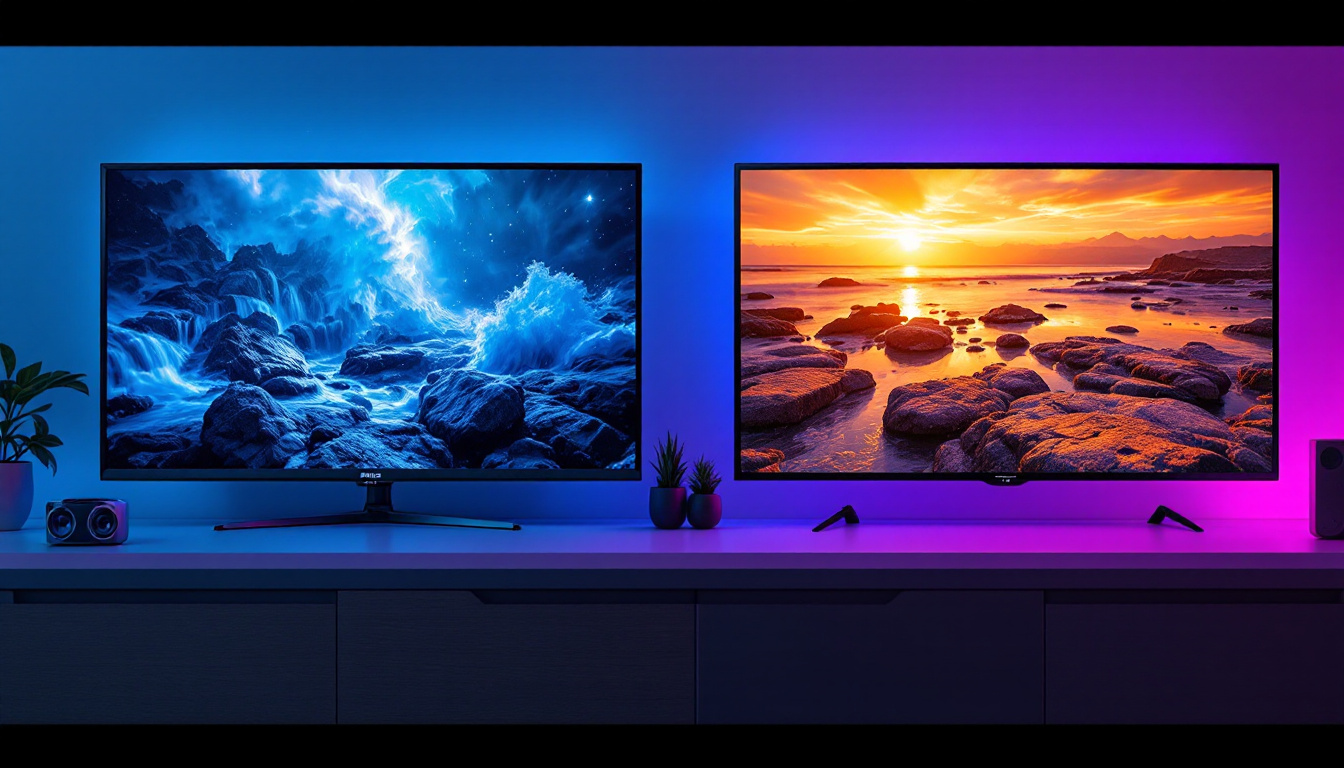In the realm of modern technology, LED displays have become ubiquitous, transforming the way information is presented in various sectors. From digital billboards to televisions and smartphones, LED technology has revolutionized visual communication. This article delves into the intricacies of LED displays, exploring their functionality, advantages, and applications.
Understanding LED Technology
LED, or Light Emitting Diode, is a semiconductor device that emits light when an electric current passes through it. This technology is the backbone of modern display systems, offering significant advantages over traditional display technologies such as LCD and CRT.
The Basics of LED Functionality
At its core, an LED display consists of multiple tiny diodes that emit light. These diodes can be arranged in various configurations to create images and videos. The combination of red, green, and blue (RGB) diodes allows for a wide range of colors to be displayed. When these colors are mixed in different intensities, they produce the full spectrum of colors visible to the human eye.
The operation of LED displays is relatively straightforward. When electricity flows through the diode, it excites the electrons within the semiconductor material, causing them to emit photons, or light particles. This process is highly efficient, resulting in lower energy consumption compared to traditional lighting methods. Additionally, the longevity of LED technology is remarkable; many LED lights can last up to 25,000 hours or more, significantly outpacing incandescent bulbs, which typically last only about 1,000 hours. This durability not only reduces the frequency of replacements but also contributes to lower waste and environmental impact.
Types of LED Displays
There are several types of LED displays, each designed for specific applications. The most common include:
- Direct View LED: These displays consist of individual LED modules that are combined to form a larger screen. They are often used in outdoor advertising and large venues.
- LED-backlit LCD: This type combines LCD technology with LED backlighting, enhancing the brightness and color accuracy of the display.
- Organic LED (OLED): Utilizing organic compounds, OLED displays offer improved contrast and color depth, making them popular in high-end televisions and smartphones.
In addition to these types, there are also specialized LED displays such as MicroLED and MiniLED. MicroLED technology utilizes microscopic LEDs to create displays with extraordinary resolution and brightness, making them ideal for immersive viewing experiences. MiniLED, on the other hand, enhances traditional LCD screens by using thousands of tiny LEDs for backlighting, providing better contrast and deeper blacks. As the technology continues to evolve, we can expect even more innovative applications and improvements in display quality, paving the way for advancements in virtual reality, augmented reality, and beyond. This rapid development showcases the versatility and potential of LED technology in various fields, from entertainment to medical imaging and beyond.
Advantages of LED Displays
The rise of LED technology can be attributed to its numerous advantages over traditional display technologies. These benefits have made LED displays the preferred choice for many applications.
Energy Efficiency
One of the most significant advantages of LED displays is their energy efficiency. Compared to traditional incandescent bulbs or even fluorescent lights, LEDs consume significantly less power. This not only reduces electricity costs but also minimizes the environmental impact, making LED displays a more sustainable option. In fact, using LED technology can lead to energy savings of up to 80% when compared to conventional lighting solutions. This efficiency is particularly advantageous for businesses looking to lower operational costs while also demonstrating a commitment to sustainability.
Brightness and Visibility
LED displays are known for their exceptional brightness, making them highly visible even in direct sunlight. This characteristic is particularly beneficial for outdoor applications, such as billboards and signage, where visibility is crucial. The ability to maintain clarity and vibrancy in various lighting conditions sets LED displays apart from other technologies. Moreover, the color rendering capabilities of LED displays allow for a wider spectrum of colors, enhancing the visual appeal of advertisements and messages. This makes them not only functional but also an effective medium for engaging audiences in a visually stimulating manner.
Longevity and Durability
LED displays have a longer lifespan compared to traditional display technologies. With a typical lifespan of 50,000 hours or more, LEDs can operate for years without significant degradation in performance. Additionally, they are more resistant to shock and vibration, making them suitable for a wide range of environments. This durability translates to lower maintenance costs, as replacements and repairs are less frequent. Furthermore, many LED displays are designed to withstand harsh weather conditions, making them ideal for outdoor use in varying climates. This resilience ensures that they remain operational and effective, regardless of external factors, thus providing a reliable solution for businesses and organizations alike.
Applications of LED Displays
LED displays have found their way into numerous industries, each leveraging the technology’s unique advantages to enhance communication and engagement.
Advertising and Marketing
In the advertising sector, LED displays are used extensively for digital billboards and signage. Their vibrant colors and high visibility attract attention, making them an effective medium for marketing campaigns. Advertisers can easily update content in real-time, allowing for dynamic messaging that can be tailored to specific audiences or events. This flexibility enables brands to engage consumers with targeted promotions, countdowns for sales, or even interactive content that encourages viewer participation. Moreover, the energy efficiency of LED technology reduces operational costs, making it a sustainable choice for long-term advertising strategies.
Entertainment and Events
LED displays are a staple in the entertainment industry, used in concerts, sports events, and theater productions. Large LED screens provide immersive experiences for audiences, displaying high-resolution visuals that enhance performances. Their ability to be configured in various shapes and sizes allows for creative stage designs and setups. For instance, during live concerts, LED walls can be synchronized with music and lighting effects, creating a cohesive sensory experience that captivates the audience. Additionally, the portability of LED panels means they can be easily transported and set up for touring events, making them a favorite among event organizers looking to make a lasting impression.
Information Displays
Public transportation systems, airports, and educational institutions utilize LED displays for information dissemination. These displays provide real-time updates on schedules, announcements, and other critical information. The clarity and immediacy of LED displays ensure that viewers receive timely and accurate information. In airports, for example, LED screens are crucial for displaying flight statuses, gate changes, and boarding times, helping to streamline passenger flow and reduce confusion. Similarly, in educational settings, LED displays can be used to showcase announcements, event schedules, and even educational content, fostering a more engaging learning environment. The adaptability of LED technology allows for a range of applications, from simple scrolling messages to complex, interactive displays that can enhance user engagement and information retention.
Challenges and Considerations
Despite their many advantages, LED displays are not without challenges. Understanding these challenges is essential for making informed decisions about their use.
Initial Costs
The initial investment for LED technology can be higher than that of traditional display systems. While the long-term savings on energy and maintenance can offset these costs, organizations must weigh their budget constraints against the benefits of LED technology. Additionally, the upfront costs can vary significantly based on the scale of the installation and the specific features desired, such as pixel pitch and brightness levels. For smaller businesses or organizations with limited funding, this can pose a significant barrier to entry, necessitating careful financial planning and potentially seeking out financing options or grants to support the transition to LED technology.
Color Calibration and Uniformity
Achieving consistent color calibration across an LED display can be challenging, particularly in larger installations. Variations in brightness and color can occur due to manufacturing differences or environmental factors. Regular calibration and maintenance are necessary to ensure uniformity and optimal performance. Moreover, the complexity of managing multiple display units can lead to discrepancies that may not be immediately noticeable but can affect the overall viewing experience. This is particularly critical in applications such as broadcasting or live events, where color accuracy is paramount. Organizations may need to invest in specialized calibration tools and training for staff to maintain the integrity of their displays over time, ensuring that audiences receive the best possible visual experience.
The Future of LED Displays
The future of LED displays looks promising, with ongoing advancements in technology paving the way for even more innovative applications. As the demand for high-quality visual content continues to grow, LED technology is expected to evolve in several key areas.
Smart LED Displays
With the rise of the Internet of Things (IoT), smart LED displays are becoming increasingly common. These displays can connect to the internet, allowing for remote management and real-time content updates. This capability enhances the flexibility and effectiveness of advertising and information dissemination.
Flexible and Transparent Displays
Emerging technologies are enabling the development of flexible and transparent LED displays. These innovations open up new possibilities for creative applications, such as curved screens and displays integrated into windows or walls. Such advancements will further blur the lines between technology and architecture, creating immersive environments.
Conclusion
LED displays represent a significant advancement in visual technology, offering unparalleled brightness, energy efficiency, and versatility. As industries continue to embrace this technology, its applications will expand, leading to new and exciting possibilities. Understanding the fundamentals of LED displays, their advantages, and their challenges is essential for anyone looking to leverage this technology effectively.
As we move forward, the integration of smart features and innovative designs will shape the future of LED displays, ensuring they remain at the forefront of visual communication. Whether in advertising, entertainment, or information dissemination, LED technology is set to illuminate our world in ways we have yet to imagine.
Illuminate Your Space with LumenMatrix
Ready to elevate your visual communication and create unforgettable experiences? LumenMatrix is at the forefront of LED display innovation, offering a wide array of solutions tailored to your needs. From Indoor and Outdoor LED Wall Displays to specialized options like Vehicle, Sports, and Floor LED Displays, our technology is designed to captivate and engage. Discover the transformative power of our Custom, All-in-One, and LED Transparent Displays. Embrace the future of digital signage with LumenMatrix and let your message shine with clarity and impact. Check out LumenMatrix LED Display Solutions today and step into a brighter, more vibrant world.

